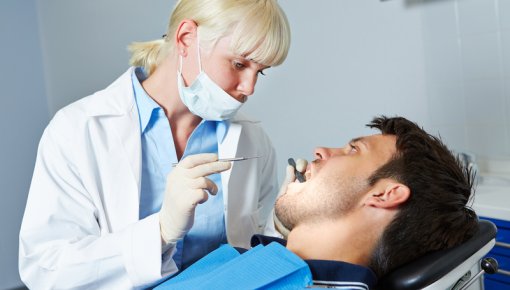Deutsche Gesellschaft für Parodontologie (DG PARO), Deutsche Gesellschaft für Zahn-, Mund- und Kieferheilkunde (DGZMK). S3-Leitlinie Die Behandlung von Parodontitis Stadium I bis III – Die deutsche Implementierung der S3-Leitlinie „Treatment of Stage I–III Periodontitis“ der European Federation of Periodontology (EFP). AWMF-Registernr.: 083-043. 2020.
Deutsche Gesellschaft für Parodontologie (DG PARO), Deutsche Gesellschaft für Zahn-, Mund- und Kieferheilkunde (DGZMK). Subgingivale Instrumentierung (S3-Leitlinie). AWMF-Registernr.: 083-030. 2019.
Gemeinsamer Bundesausschuss (G-BA). Richtlinie zur systematischen Behandlung von Parodontitis und anderer Parodontalerkrankungen (PAR-Richtlinie): Erstfassung. 2020.
Institute for Quality and Efficiency in Health Care (IQWiG, Germany). Assessment of the systematic treatment of parodontopathies; Commission N15-01. 2018.
Karlsson E, Lymer UB, Hakeberg M. Periodontitis from the patient's perspective, a qualitative study. Int J Dent Hyg 2009; 7(1): 23-30.
Khattri S, Kumbargere Nagraj S, Arora A et al. Adjunctive systemic antimicrobials for the non-surgical treatment of periodontitis. Cochrane Database Syst Rev 2020; (11): CD012568.
Pihlstrom BL, Michalowicz BS, Johnson NW. Periodontal diseases. Lancet 2005; 366(9499): 1809-1820.
Stenman J, Hallberg U, Wennström JL et al. Patients' attitudes towards oral health and experiences of periodontal treatment: a qualitative interview study. Oral Health Prev Dent 2009; 7(4): 393-401.
Worthington HV, MacDonald L, Poklepovic Pericic T et al. Home use of interdental cleaning devices, in addition to toothbrushing, for preventing and controlling periodontal diseases and dental caries. Cochrane Database Syst Rev 2019; (4): CD012018.
IQWiG health information is written with the aim of helping people understand the advantages and disadvantages of the main treatment options and health care services.
Because IQWiG is a German institute, some of the information provided here is specific to the German health care system. The suitability of any of the described options in an individual case can be determined by talking to a doctor. informedhealth.org can provide support for talks with doctors and other medical professionals, but cannot replace them. We do not offer individual consultations.
Our information is based on the results of good-quality studies. It is written by a team of health care professionals, scientists and editors, and reviewed by external experts. You can find a detailed description of how our health information is produced and updated in our methods.

